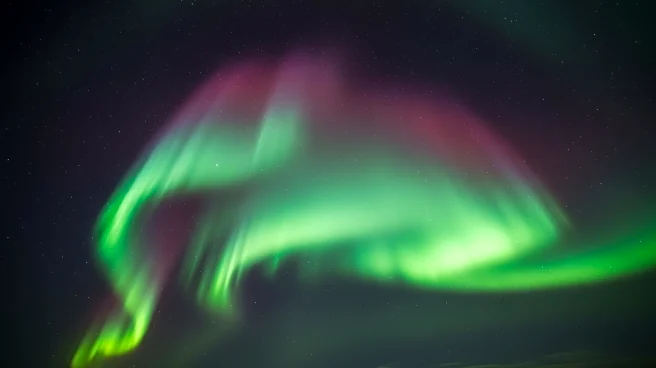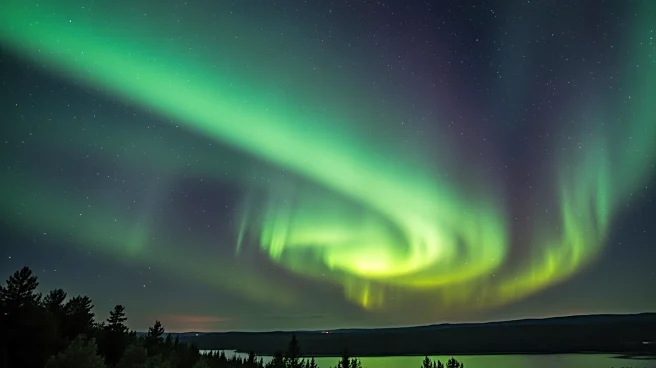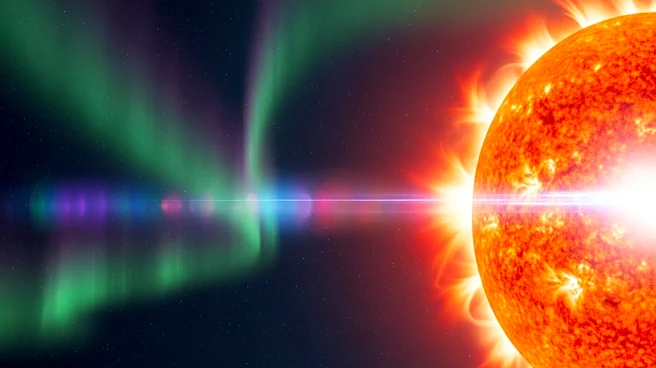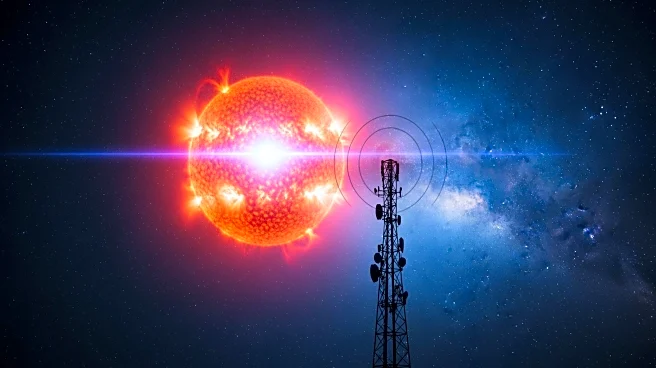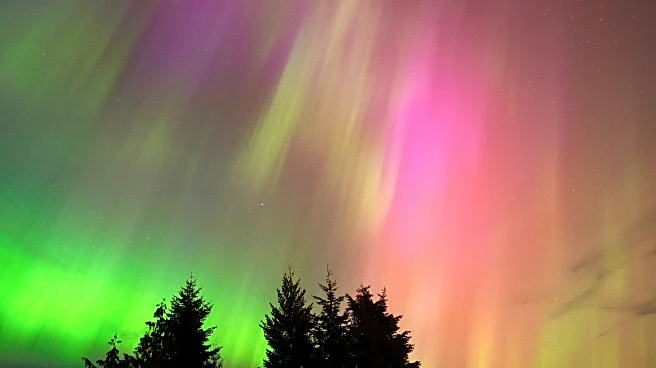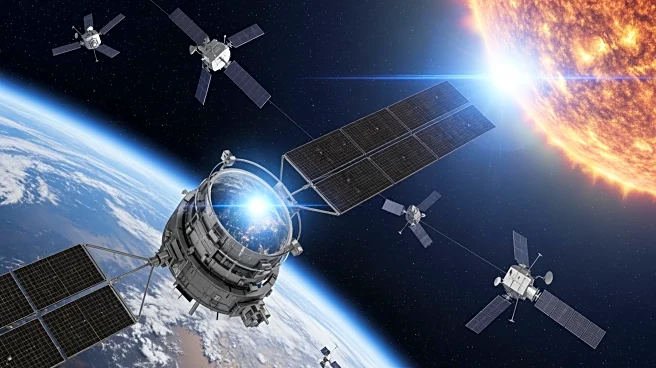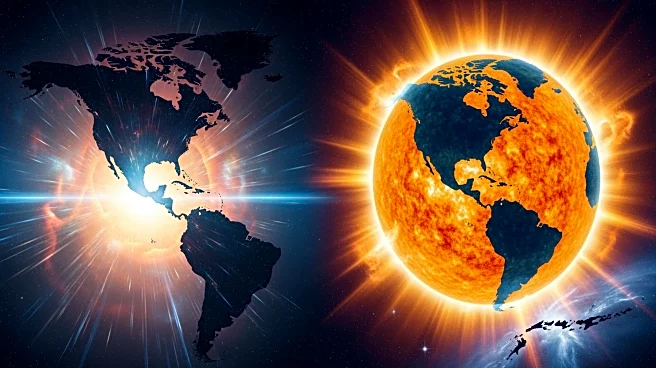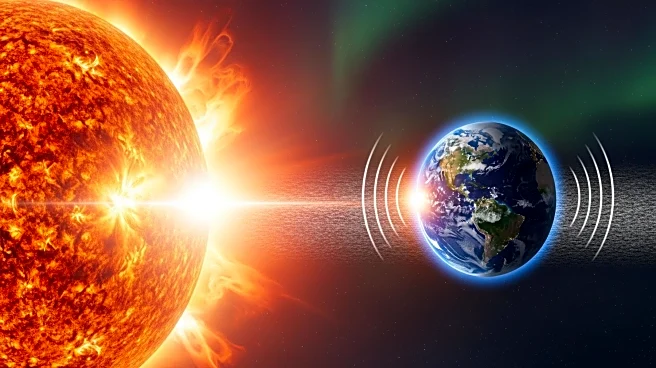What's Happening?
A powerful geomagnetic storm, classified as a G3 event, unexpectedly illuminated the skies across the Northern Hemisphere, providing a stunning display of auroras visible from Canada to northern parts
of North America. The storm, which began on November 5, 2025, surprised skywatchers with vibrant green, pink, and purple lights. The NOAA's Space Weather Prediction Center has issued a G3 geomagnetic storm watch, indicating that aurora activity may continue as more solar material interacts with Earth's magnetic field. Photographers and aurora enthusiasts have captured breathtaking images and videos of the phenomenon, showcasing the dynamic and colorful displays.
Why It's Important?
The occurrence of such a geomagnetic storm highlights the dynamic nature of space weather and its potential impact on Earth. While auroras are visually captivating, geomagnetic storms can also affect satellite operations, power grids, and communication systems. The ability to predict and monitor these events is crucial for mitigating potential disruptions. The widespread visibility of the auroras has sparked interest and engagement among the public, promoting awareness of space weather phenomena. This event underscores the importance of continued research and investment in space weather prediction capabilities to safeguard technological infrastructure.
What's Next?
As the geomagnetic storm watch remains in effect, aurora chasers and photographers are advised to stay alert for further displays. The NOAA's Space Weather Prediction Center will continue to monitor solar activity and provide updates on potential geomagnetic disturbances. Stakeholders in satellite operations and power grid management may need to prepare for possible impacts, ensuring systems are resilient to space weather events. The scientific community will likely analyze data from this storm to improve predictive models and enhance understanding of solar-terrestrial interactions.
Beyond the Headlines
Beyond the immediate visual spectacle, this geomagnetic storm serves as a reminder of the interconnectedness between solar activity and Earth's environment. It raises questions about the long-term implications of space weather on technological advancement and the need for international collaboration in space weather research. The cultural fascination with auroras also reflects humanity's enduring curiosity about natural phenomena and the universe.



